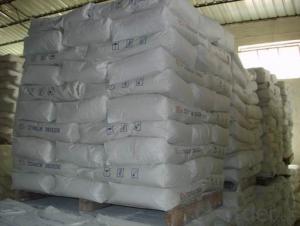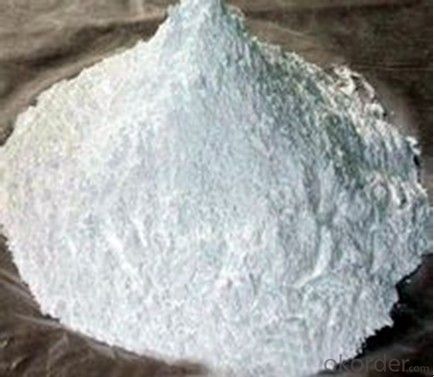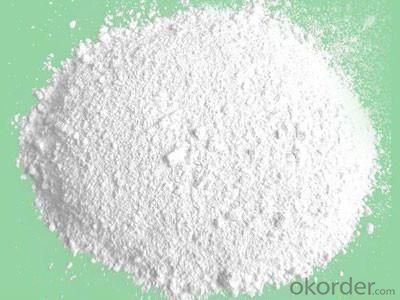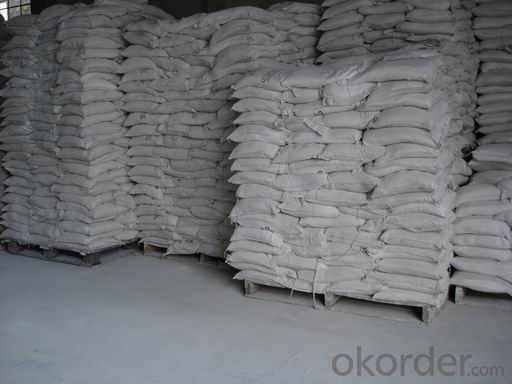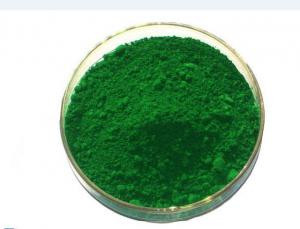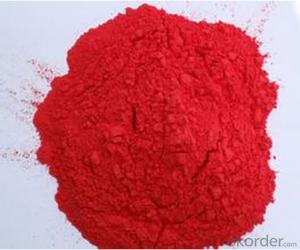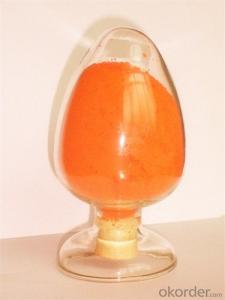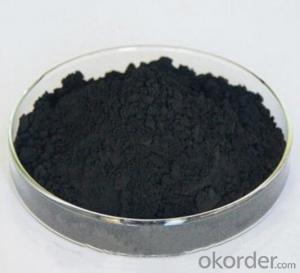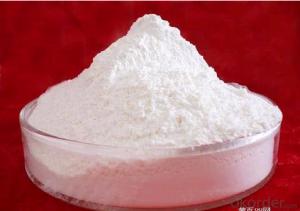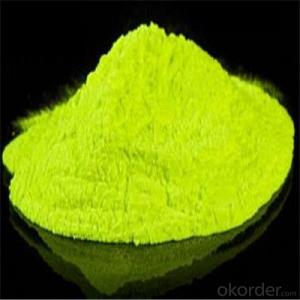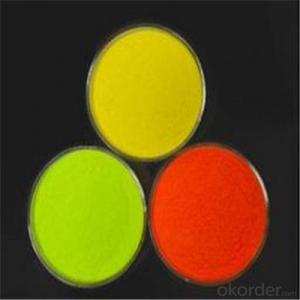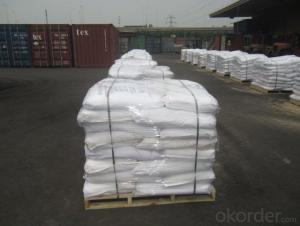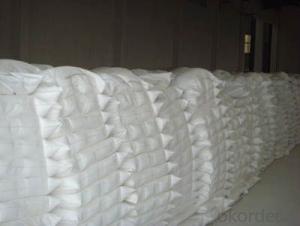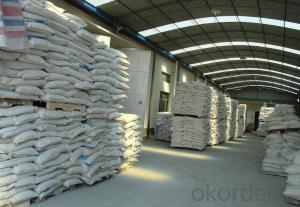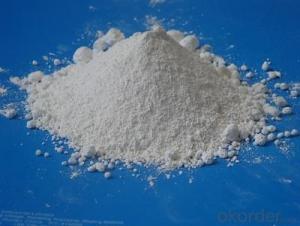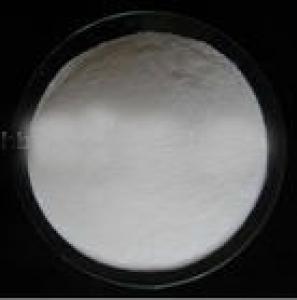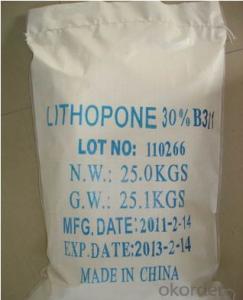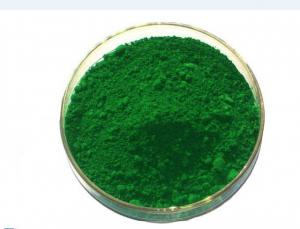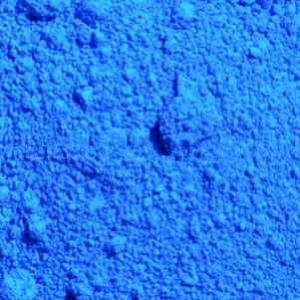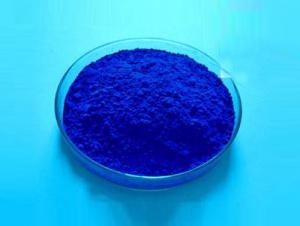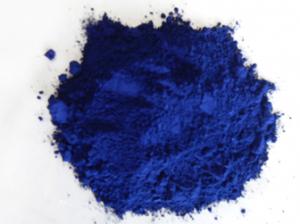Lithopone pigments B301 B311 28% 30% Pigment chemical factory direct sell
- Loading Port:
- Tianjin
- Payment Terms:
- TT OR LC
- Min Order Qty:
- 20 m.t.
- Supply Capability:
- 2000 m.t./month
OKorder Service Pledge
OKorder Financial Service
You Might Also Like
Specifications of Lithopone
1.The factory direct sell
2.Free samples
3.Visit our booth for more details
Lithopone(B301 B311)
1.well-used in paint-making, printing ink, plastics, leather, PVC
2.lithopone 28-30% b311 b301
3.high quality
4.low price
Features:
1) A white pigment produced by precipitation through filtering,
heating and quenching works
2) Has mostly been replaced by titanium dioxide which is more
durable, but it is much cheaper
Applications:
1) Used as a base for lake pigment
2) Used as a inert pigment for paint, ink and cosmetics
3) A large range of applications in plastic industry
4) Used as a filler in paper, leather, and linoleum
English Name: Lithopone(B301 B311) | ||
Item | Index | |
B301 | B311 | |
In terms of total zinc sulfide and barium sulfate the sum of% (m / m) ≥ | 99 | 99 |
The total amount of zinc (in zinc sulfide)% m / m) ≥ | 28 | 30 |
Zinc Oxide% (m / m) | 0.6 | 0.3 |
105 °C Volatile% (m / m) ≤ | 0.3 | 0.3 |
Water soluble% (m / m) ≤ | 0.4 | 0.3 |
Filter material (63μm filter)% (m / m) ≤ | 0.1 | 0.1 |
Color (with standard sample) | Excellent | Excellent |
Death by degrees to take liquid water | Neutral | Neutral |
Oil Absorption g/100g | 14 | 10 |
Reducing power (with standard sample)% ≥ | 105 | 105 |
Opacity (contrast ratio) | Not lower than 5%standerd sample | Not lower than 5%standerd sample |
Properties: This product is a kind of new-style nontoxic. Green non-pollution, lithopone than traditional lithopone albedo high, hiding power, fineness and high-temperature weatherability, strong characteristic. | ||
Uses: Widely used in coating, powder, plastic, profiles, paint, rubber, paper, and leather, etc. | ||
Packing: 25 kg/50kg P.P woven bag or with the clients’ request | ||
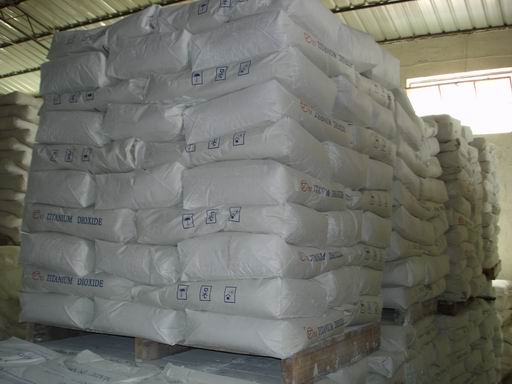
- Q: I am about to purchase a bunch of MAC pigments and I have noticed that they all look glittery, is this just the kind that i am looking at? I know they are versatile, so that is why i want to buy them. And it seems as though they will last longert than eyeshadow...
- they will last A LOT longer then eye shadows. and if you dont want the pigment to be as shiny i would suggest to mix it with an eyeshadow. i have also noticed they r all very glittery. sorry if this didnt help much Good luck! :)
- Q: There was a question, not to long ago, that asked are L'oreal HIP pigments good? What are pigments?
- hiya pigment - or pigmentation is when the skin has changed colour darker or lighter patches caused by sun exposure, hormones skin trauma & congenital factors. Heat, injury, and medications are some of the most common reasons for changes and unevenness in skin pigmentation. Emotional stress is also play a part. You have prob seen someone with lighter or darker patches of skin - lighter is normally sun damage & darker is normally hormonal or in some case genetic it can effect any race of person. hope this helps you x
- Q: I hear about it cause my Friend is albino and she was born with no pigments in her hair,skin or eyes
- Melanin is a pigment that is ubiquitous in nature, being found in most organisms (spiders are one of the few groups in which it has not been detected). In animals melanin pigments are derivatives of the amino acid tyrosine. The most common form of biological melanin is eumelanin, a brown-black polymer of dihydroxyindole carboxylic acids, and their reduced forms. All melanins are derivatives of polyacetylene. The most common melanin – dopamelanin – is a mixed copolymer of polyacetylene, polyaniline, and polypyrrole. Another common form of melanin is pheomelanin, a red-brown polymer of benzothiazine units largely responsible for red hair and freckles. The presence of melanin in the archaea and bacteria kingdoms is an issue of ongoing debate among researchers in the field. The increased production of melanin in human skin is called melanogenesis. Production of melanin is stimulated by DNA damage induced by UVB-radiation,[1] and it leads to a delayed development of a tan. This melanogenesis-based tan takes more time to develop, but it is long lasting.[2] The photochemical properties of melanin make it an excellent photoprotectant. It absorbs harmful UV-radiation and transforms the energy into harmless heat through a process called ultrafast internal conversion. This property enables melanin to dissipate more than 99.9% of the absorbed UV radiation as heat[3] (see photoprotection). This prevents the indirect DNA damage that is responsible for the formation of malignant melanoma and other skin cancers. Albinism (from Latin albus, white; see extended etymology, also called achromia, achromasia, or achromatosis) is a congenital disorder characterized by the complete or partial absence of pigment in the skin, hair and eyes due to absence or defect of an enzyme involved in the production of melanin.
- Q: I hear about it cause my Friend is albino and she was born with no pigments in her hair,skin or eyes
- Melanin (i /?m?l?n?n/; Greek: μ?λα?, black) is a pigment that is ubiquitous in nature, being found in most organisms (spiders are one of the few groups in which it has not been detected). In animals melanin pigments are derivatives of the amino acid tyrosine. The most common form of biological melanin is eumelanin, a brown-black polymer of dihydroxyindole carboxylic acids, and their reduced forms. All melanins are derivatives of polyacetylene. The most common melanin – dopamelanin – is a mixed copolymer of polyacetylene, polyaniline, and polypyrrole. Another common form of melanin is pheomelanin, a red-brown polymer of benzothiazine units largely responsible for red hair and freckles. The presence of melanin in the archaea and bacteria kingdoms is an issue of ongoing debate among researchers in the field. The increased production of melanin in human skin is called melanogenesis. Production of melanin is stimulated by DNA damage induced by UVB-radiation,[1] and it leads to a delayed development of a tan. This melanogenesis-based tan takes more time to develop, but it is long lasting.[2] The photochemical properties of melanin make it an excellent photoprotectant. It absorbs harmful UV-radiation and transforms the energy into harmless heat through a process called ultrafast internal conversion. This property enables melanin to dissipate more than 99.9% of the absorbed UV radiation as heat[3] (see photoprotection). This prevents the indirect DNA damage that is responsible for the formation of malignant melanoma and other skin cancers. Albinism (from Latin albus, white; see extended etymology, also called achromia, achromasia, or achromatosis) is a congenital disorder characterized by the complete or partial absence of pigment in the skin, hair and eyes due to absence or defect of an enzyme involved in the production of melanin.
- Q: thinking about the main role of pigments in photosynthesis...? explain how the pigments in colored objects suc?
- photosynthetic pigment or antenna pigment is a pigment that is present in chloroplasts or photosynthetic bacteria and captures the light energy necessary for photosynthesis. Green plants have five closely-related photosynthetic pigments (in order of increasing polarity): Carotene - an orange pigment Xanthophyll - a yellow pigment Chlorophyll a - a blue-green pigment Chlorophyll b - a yellow-green pigment Phaeophytin a[1] - a gray-brown pigment Phaeophytin b[1] - a yellow-brown pigment Chlorophyll a is the most common of the six, present in every plant that performs photosynthesis. The reason that there are so many pigments is that each absorbs light more efficiently in a different part of the spectrum. Chlorophyll a absorbs well at a wavelength of about 400-450 nm and at 650-700 nm; chlorophyll b at 450-500 nm and at 600-650 nm. Xanthophyll absorbs well at 400-530 nm. However, none of the pigments absorbs well in the green-yellow region, which is responsible for the abundant green we see in nature.
- Q: I need to know the classes and sub classes of pigments classification
- organic pigment and inorganic pigment
- Q: Can somebody answer this in AP BIO language please
- A pigment molecule absorbs at specific wavelength(s), meaning that when light of a specific wavelength is incident to the molecule only certain wavelengths are absorbed while others are transmitted. The spectrophotometer emits monochromatic light (light of only one wavelength) which passes through the pigment molecule and a detector determines the amount of light that is either absorbed or transmitted by the sample. This is done at wavelengths from the UV (180-330 nm) to the visible (330-700 nm) and the light that is either transmitted or absorbed is detected by the spectrophotometer and is able to be graphed with absorbance representing the y-axis and wavelength representing the x-axis. The resultant graph will depict the absorption spectrum of that particular pigment molecule. Hope that helps.
- Q: If they are not the same, then what is the difference? Please help me out here.
- Yes, tannins are pigments but they aren't really the main plant pigment. Plant pigments usually refer to photosynthetic pigments (chlorophyll, carotenoids, etc.). These photosynthetic pigments give the leaves their green color (or yellow/orange in the fall). Tannins are non-photosynthetic phytochemical (involved in plant metabolism and internal functioning), but they are also a pigment. Tannins (and lignins) are brown. This is was gives dead leaves and wood their color. Tannins also leach out of the leaves when soaked in water (same process as brewing a cup of tea). So tannins are pigments when they leach out of leaves and stain water (or other things) brown, but they are not photosynthetic plant pigments. In other words, it depends on what context you are calling a tannin a pigment. In a live plant they are not a pigment (judgment call here). In a dead leaf or when they leach out of a leaf they are a pigment.
- Q: What happens to the yellow pigments in a leaf during the summer months?
- Carotenes and xanthophylls are always present in the leaves of plants. During the summer, the abundant chlorophyll masks the presence of the yellows, oranges, and reds that are also present. These other pigments are called accessory pigments and also absorb light energy used in photosynthesis.
Send your message to us
Lithopone pigments B301 B311 28% 30% Pigment chemical factory direct sell
- Loading Port:
- Tianjin
- Payment Terms:
- TT OR LC
- Min Order Qty:
- 20 m.t.
- Supply Capability:
- 2000 m.t./month
OKorder Service Pledge
OKorder Financial Service
Similar products
Hot products
Hot Searches
Related keywords
